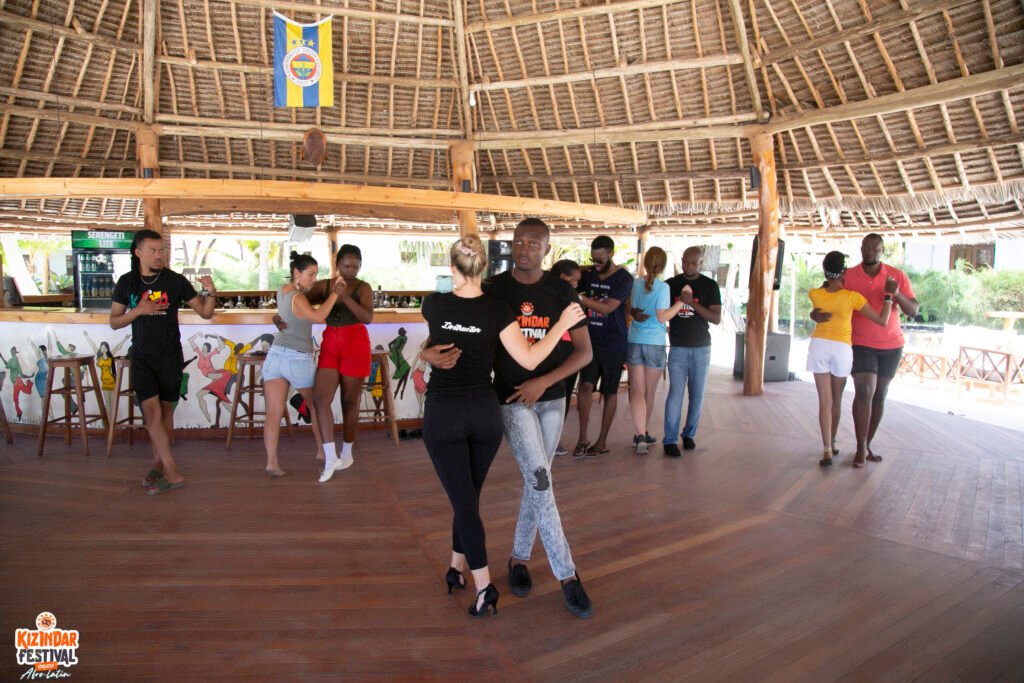Passada, also known as the traditional style, is one of the most well-known styles of Kizomba dance. It is characterized by its slow and smooth movements, as well as its close body contact. This style is considered the original form of Kizomba and was developed in Angola.
The word “passada” means “step” in Portuguese, and this style emphasizes on the connection and fluidity between the partners. The dance is performed in a close embrace, with the man leading the woman through a series of simple and elegant steps.
One of the defining features of passada is its slow pace. The dance moves are meant to be executed in a relaxed and gentle manner, with each step flowing seamlessly into the next. This style is all about feeling the music and allowing the movement to come naturally.
Passada is also known for its close body contact. The dance partners maintain a strong connection throughout the dance, with the man guiding the woman through a series of smooth and flowing movements. This close contact creates a sense of intimacy and connection between the partners.
Passada is often considered to be one of the most romantic styles of Kizomba dance. The slow and graceful movements, combined with the close body contact, create a sensual and intimate atmosphere. This makes it a popular choice for couples looking for a romantic and elegant dance style.
In terms of footwork, passada is known for its simplicity. The steps are relatively easy to learn and are meant to flow smoothly and naturally. This makes it a great style for beginners, as well as experienced dancers looking to refine their technique.
Passada is an important part of Kizomba’s history and culture. It represents the roots of this dance style and showcases the elegance and beauty of Angolan dance. It is a style that is loved by many and is sure to continue to be an important part of the Kizomba dance community for years to come.
In conclusion, passada is a beautiful and elegant style of Kizomba dance. It is characterized by its slow and smooth movements, close body contact, and simple footwork. This style is a great choice for couples looking for a romantic and intimate dance style, as well as for beginners looking to learn the basics of Kizomba dance.
The music that accompanies Passada is typically slow and romantic, featuring instruments like the guitar, accordion, and violin. The lyrics often tell stories of love and heartbreak, which are themes that are central to Kizomba culture.
Passada has its roots in Angola, which was a Portuguese colony until 1975. The dance style evolved as a result of the cultural exchange between the Portuguese colonizers and the local African population. Over time, the dance spread throughout the African continent and eventually made its way to Europe, where it gained popularity in the 1980s and 1990s.
Today, Kizomba is a global phenomenon with communities of dancers and teachers all over the world. Passada remains an important part of the Kizomba dance repertoire, and many instructors emphasize the importance of learning the traditional style before moving on to more contemporary styles.
In conclusion, Passada is the foundation of Kizomba dance and is characterized by slow and smooth movements, close body contact, and a focus on simplicity and fluidity. The dance style incorporates basic steps from various dance styles, as well as dips, lifts, and tricks. The music that accompanies Passada is typically slow and romantic, featuring instruments like the guitar, accordion, and violin. With its roots in Angola and a global following, Passada is an important part of the Kizomba dance community and a beautiful expression of culture and art.
References:
- Kizomba Passion. (n.d.). Kizomba Styles. Retrieved from https://www.kizombapassion.co.uk/kizomba-styles.html
- Kizomba Academy. (n.d.). Kizomba Styles: The Original Style – Passada. Retrieved from https://kizombaacademy.com/kizomba-styles-original-style-passada/
- AfricanDance365. (2018, November 13). The Different Styles of Kizomba. Retrieved from https://www.africandance365.com/the-different-styles-of-kizomba/
Image credits: Original artwork created by Professor Buru, copyrighted to Professor Buru.

